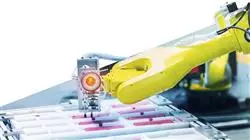University certificate
The world's largest faculty of information technology”
Introduction to the Program
Enroll now in a degree that will help you create the most Advanced Deep Learning algorithms"

The progress in the field of Deep Learning has been significant in recent years thanks to the development of new techniques and methodologies that allow training deep learning models with higher performance and efficiency. Therefore, there is a great demand for highly trained professionals in this area to apply these techniques to innovative and challenging projects, so the computer scientist of today is facing a fantastic opportunity.
That is why this Postgraduate diploma in Advanced Deep Learning has been created, which consists of several thematic units that address the most relevant aspects of Deep Learning, from supervised learning to reinforcement learning and text generation. In addition, participants will have the opportunity to master advanced techniques such as the use of recurrent neural networks.
Likewise, the Postgraduate diploma in Advanced Deep Learning is taught online, allowing students to access the degree content anytime, anywhere. Similarly, the pedagogical methodology of Relearning focuses on autonomous and directed learning through the reiteration of concepts, boosting the educational progress of students. In addition, the program offers great flexibility in organizing academic resources, allowing students to adapt their learning to their specific schedules and needs.
Stand out with a Postgraduate diploma that will allow you to lay the foundations to replicate the success of AI companies such as OpenAI or DeepMind"
This Postgraduate diploma in Advanced Deep Learning contains the most complete and up-to-date program on the market. The most important features include:
- The development of case studies presented by experts in Advanced Deep Learning
- The graphic, schematic and eminently practical contents with which it is conceived gather technological and practical information on those disciplines that are essential for professional practice
- Practical exercises where self-assessment can be used to improve learning
- Its special emphasis on innovative methodologies
- Theoretical lessons, questions to the expert, debate forums on controversial topics, and individual reflection assignments
- Content that is accessible from any fixed or portable device with an Internet connection
Launch your career as a computer scientist creating advanced Deep Computer Vision models"
The program’s teaching staff includes professionals from sector who contribute their work experience to this educational program, as well as renowned specialists from leading societies and prestigious universities.
Its multimedia content, developed with the latest educational technology, will provide the professional with situated and contextual learning, i.e., a simulated environment that will provide an immersive education programmed to learn in real situations.
The design of this program focuses on Problem-Based Learning, by means of which the professional must try to solve the different professional practice situations that are presented throughout the academic course. For this purpose, the student will be assisted by an innovative interactive video system created by renowned experts.
You will be a reference when it comes to creating AI models that produce natural language with amazing quality"

You will undergo useful case studies that will enhance your skills to optimize an agent's policy"
Why study at TECH?
TECH is the world’s largest online university. With an impressive catalog of more than 14,000 university programs available in 11 languages, it is positioned as a leader in employability, with a 99% job placement rate. In addition, it relies on an enormous faculty of more than 6,000 professors of the highest international renown.

Study at the world's largest online university and guarantee your professional success. The future starts at TECH”
The world’s best online university according to FORBES
The prestigious Forbes magazine, specialized in business and finance, has highlighted TECH as “the world's best online university” This is what they have recently stated in an article in their digital edition in which they echo the success story of this institution, “thanks to the academic offer it provides, the selection of its teaching staff, and an innovative learning method aimed at educating the professionals of the future”
A revolutionary study method, a cutting-edge faculty and a practical focus: the key to TECH's success.
The most complete study plans on the university scene
TECH offers the most complete study plans on the university scene, with syllabuses that cover fundamental concepts and, at the same time, the main scientific advances in their specific scientific areas. In addition, these programs are continuously being updated to guarantee students the academic vanguard and the most in-demand professional skills. In this way, the university's qualifications provide its graduates with a significant advantage to propel their careers to success.
TECH offers the most comprehensive and intensive study plans on the current university scene.
A world-class teaching staff
TECH's teaching staff is made up of more than 6,000 professors with the highest international recognition. Professors, researchers and top executives of multinational companies, including Isaiah Covington, performance coach of the Boston Celtics; Magda Romanska, principal investigator at Harvard MetaLAB; Ignacio Wistumba, chairman of the department of translational molecular pathology at MD Anderson Cancer Center; and D.W. Pine, creative director of TIME magazine, among others.
Internationally renowned experts, specialized in different branches of Health, Technology, Communication and Business, form part of the TECH faculty.
A unique learning method
TECH is the first university to use Relearning in all its programs. It is the best online learning methodology, accredited with international teaching quality certifications, provided by prestigious educational agencies. In addition, this disruptive educational model is complemented with the “Case Method”, thereby setting up a unique online teaching strategy. Innovative teaching resources are also implemented, including detailed videos, infographics and interactive summaries.
TECH combines Relearning and the Case Method in all its university programs to guarantee excellent theoretical and practical learning, studying whenever and wherever you want.
The world's largest online university
TECH is the world’s largest online university. We are the largest educational institution, with the best and widest online educational catalog, one hundred percent online and covering the vast majority of areas of knowledge. We offer a large selection of our own degrees and accredited online undergraduate and postgraduate degrees. In total, more than 14,000 university degrees, in eleven different languages, make us the largest educational largest in the world.
TECH has the world's most extensive catalog of academic and official programs, available in more than 11 languages.
Google Premier Partner
The American technology giant has awarded TECH the Google Google Premier Partner badge. This award, which is only available to 3% of the world's companies, highlights the efficient, flexible and tailored experience that this university provides to students. The recognition as a Google Premier Partner not only accredits the maximum rigor, performance and investment in TECH's digital infrastructures, but also places this university as one of the world's leading technology companies.
Google has positioned TECH in the top 3% of the world's most important technology companies by awarding it its Google Premier Partner badge.
The official online university of the NBA
TECH is the official online university of the NBA. Thanks to our agreement with the biggest league in basketball, we offer our students exclusive university programs, as well as a wide variety of educational resources focused on the business of the league and other areas of the sports industry. Each program is made up of a uniquely designed syllabus and features exceptional guest hosts: professionals with a distinguished sports background who will offer their expertise on the most relevant topics.
TECH has been selected by the NBA, the world's top basketball league, as its official online university.
The top-rated university by its students
Students have positioned TECH as the world's top-rated university on the main review websites, with a highest rating of 4.9 out of 5, obtained from more than 1,000 reviews. These results consolidate TECH as the benchmark university institution at an international level, reflecting the excellence and positive impact of its educational model.” reflecting the excellence and positive impact of its educational model.”
TECH is the world’s top-rated university by its students.
Leaders in employability
TECH has managed to become the leading university in employability. 99% of its students obtain jobs in the academic field they have studied, within one year of completing any of the university's programs. A similar number achieve immediate career enhancement. All this thanks to a study methodology that bases its effectiveness on the acquisition of practical skills, which are absolutely necessary for professional development.
99% of TECH graduates find a job within a year of completing their studies.
Postgraduate Diploma in Advanced Deep Learning
Deep Learning has become one of the most demanded fields with the greatest projection in the technological field. To improve the capacity of data analysis and decision making, companies are looking to incorporate specialists in the area. TECH, aware of this need, has developed the Postgraduate Diploma in Advanced Deep Learning. This postgraduate course will deepen the knowledge of the most advanced techniques of machine learning, neural networks and deep learning. This will allow the professional to specialize in the creation, implementation and optimization of deep learning models to solve complex problems.
The proper handling of Deep Learning assumes a deep knowledge in mathematics, statistics and programming. In our Postgraduate Diploma you will approach the practical handling of the most used software tools and programming libraries in Deep Learning. Such as TensorFlow and PyTorch. This will allow you to effectively apply the knowledge acquired in real life projects. You will deepen your knowledge of hyperparameter selection and the implementation of regularization techniques. In short, the program in Advanced Deep Learning at TECH, is the best option to acquire the necessary knowledge and stand out in the job field.







